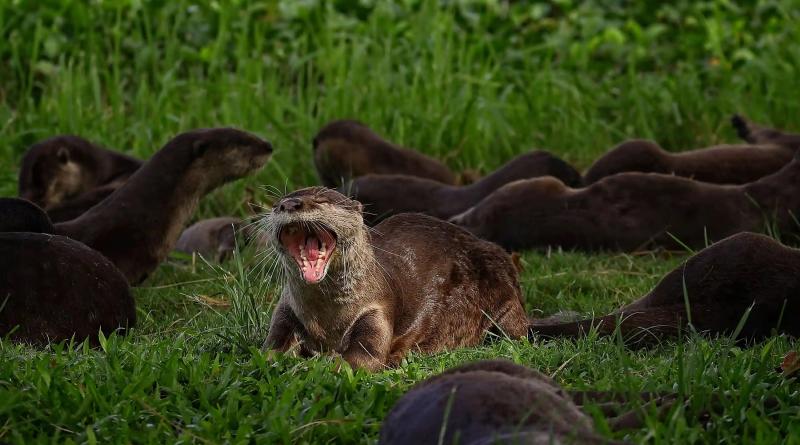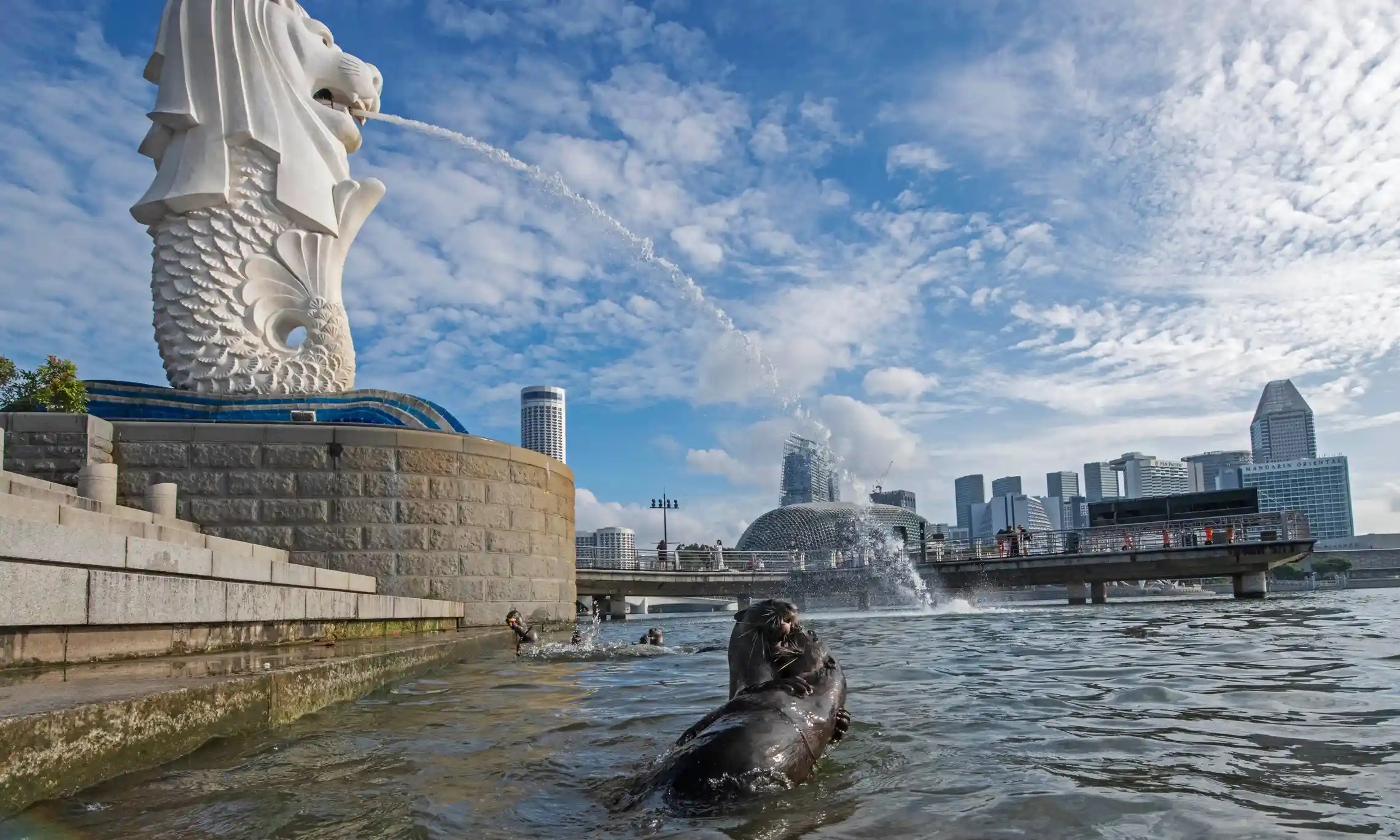Slippery, hungry, sometimes angry: Singapore struggles with ‘unparalleled’ otter boom

Numbers have doubled, with occasional attacks on humans and fish ponds prompting relocation efforts
Singapore authorities have an unusual source of mayhem on their hands: an exploding otter population.
Amid an upswing in interactions between the buoyant, hand-holding mammals and humans in recent months, the National Parks Board, known as NParks, is working to relocate the island’s 170 otters away from residential areas and otter-proof people’s homes.
Singapore’s smooth-coated otter population has more than doubled since 2019, with roughly 17 families fishing for tilapia in waterways, sleeping under bridges and ravaging private fish ponds – and on rare occasions attacking people in public parks.
“They’re not afraid, and the bolder families just walk right past us,” said N Sivasothi, a senior lecturer in biological sciences at the National University of Singapore. “There isn’t a place in Singapore where you’d be completely isolated from otters.”
In 2020, NParks received 208 citizen reports about otters, followed by 305 in 2021, and more than 300 as of this August. Although most reports are sightings, otters have been known to lash out when threatened.
Last week, Sivasothi and the Otter Working Group, made up of NParks, wildlife experts and citizen otter watchers, completed the island’s first relocation at an estate in the city’s Seletar area.
The nearly weeklong mission involved luring six otters from the hidey-hole they had dug up under a pedestrian walkway and moving them to an undisclosed location with natural food sources.
The otters had been visiting the estate for months to snatch fish from its ponds, at one point raiding 10 homes in one night, Sivasothi said. Then the family had pups and took up permanent residency near a busy roadway, a potential hazard for the otters and people alike.
Tan Kiat How, Singapore’s senior minister of state for national development and communications and information, wrote on Facebook the operation went “smoothly” and called on Singaporeans to avoid approaching or feeding the animals. The working group was also helping estate managers patch up fences, fill otter holts and remove attractants such as koi, he said.
“Living in our city in nature means we coexist with wildlife like otters and get to observe them in our midst,” he said. “As we enjoy the benefits of this, we also understand residents’ concerns regarding incursions into their properties.”

The otter population has been rebounding since the 1980s when Singapore started cleaning up its waterways. Their numbers are rising partially because otters face no significant danger from other predators and only encounter crocodiles in a wetlands mangrove in the city’s north-west.
Fish populations have also increased as waterways have become less polluted and provided plentiful food. Now otters are an increasingly common presence on urban streets as they claim more territory for themselves. On occasion, that presence can become menacing. Last year, a British man living in Singapore said he “thought he was going to die” when a pack of otters chased him in the Botanic Gardens, pinned him to the ground and bit him 26 times in a matter of seconds. Months earlier, a 77-year-old man was bitten on the leg during his morning exercise near the Kallang River.

Other episodes of human-otter interaction have been less severe. A condominium tower in the River Valley area received a visit in which otters took koi and frolicked in the pool, while a church reported that nearly 100 fish had been eaten in a similar incident. “The pastor simply joked that we have less koi now,” one Facebook user said. “I joked that the otter should go to the otter (altar) and confess on Sunday service.”
Aside from eating koi – which can be expensive, costing one homeowner $64,000 – they have been known to stop traffic.
Local “ottergraphers” are dedicated to capturing sightings on popular social media pages. NParks advises people to keep a safe distance and refrain from touching or cornering the animals, especially when there are pups around.
“We are facing something unparalleled,” Sivasothi said. “Initially it was just urban otters utilising spaces in Singapore, and then as the population grew and competition forced them into the urban matrix, we’re now having to adapt.”






